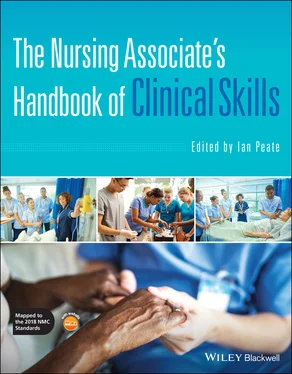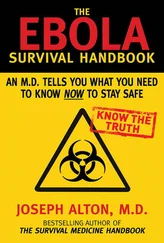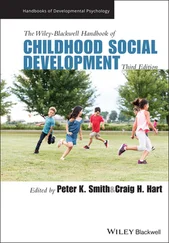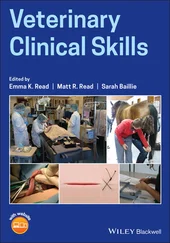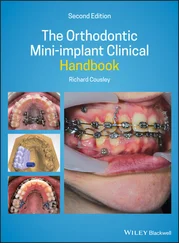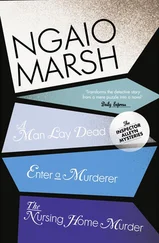The Nursing Associate's Handbook of Clinical Skills
Здесь есть возможность читать онлайн «The Nursing Associate's Handbook of Clinical Skills» — ознакомительный отрывок электронной книги совершенно бесплатно, а после прочтения отрывка купить полную версию. В некоторых случаях можно слушать аудио, скачать через торрент в формате fb2 и присутствует краткое содержание. Жанр: unrecognised, на английском языке. Описание произведения, (предисловие) а так же отзывы посетителей доступны на портале библиотеки ЛибКат.
- Название:The Nursing Associate's Handbook of Clinical Skills
- Автор:
- Жанр:
- Год:неизвестен
- ISBN:нет данных
- Рейтинг книги:4 / 5. Голосов: 1
-
Избранное:Добавить в избранное
- Отзывы:
-
Ваша оценка:
- 80
- 1
- 2
- 3
- 4
- 5
The Nursing Associate's Handbook of Clinical Skills: краткое содержание, описание и аннотация
Предлагаем к чтению аннотацию, описание, краткое содержание или предисловие (зависит от того, что написал сам автор книги «The Nursing Associate's Handbook of Clinical Skills»). Если вы не нашли необходимую информацию о книге — напишите в комментариях, мы постараемся отыскать её.
The Nursing Associate’s Handbook of Clinical Skills
The Nursing Associate’s Handbook of Clinical Skills
The Nursing Associate's Handbook of Clinical Skills — читать онлайн ознакомительный отрывок
Ниже представлен текст книги, разбитый по страницам. Система сохранения места последней прочитанной страницы, позволяет с удобством читать онлайн бесплатно книгу «The Nursing Associate's Handbook of Clinical Skills», без необходимости каждый раз заново искать на чём Вы остановились. Поставьте закладку, и сможете в любой момент перейти на страницу, на которой закончили чтение.
Интервал:
Закладка:
Green Flag
 The NMC Code contains requirement which are relevant to escalating concerns:
The NMC Code contains requirement which are relevant to escalating concerns:
1 8.1 Respect the skills, expertise and contributions of your colleagues, referring matters to them where appropriate
2 13.2 Make a timely referral to another practitioner when any action, care or treatment is required
3 13.3 Ask for help from an appropriately qualified and experienced professional to carry out any action or procedure which is beyond the limits of your competence
4 15.2 Arrange, wherever possible, for emergency care to be accessed and provided promptly
The most common root cause of serious errors clinically and organisationally is related to inadequate verbal and written communication. The Institute for Innovation and Improvement (2010) notes that there are some important barriers to communication that occur across different disciplines and levels of staff. These barriers include:
Hierarchy
Gender
Ethnic background
Differences in communication styles between disciplines and individuals
Communication is more effective (and therefore patient safety) in teams where there are standard communication structures in place; Situation, Background, Assessment, Recommendation (SBAR) and Reason, Story, Vital Signs, Plan (RSVP) are examples of these standard communication structures.
Assessment and Planning Ahead
Healthcare professionals face constantly changing priorities. Consequently, when escalating a concern about a patient’s health, it is important to consider carefully the information that needs to be given and how that information can be structured into a format which conveys the intended message: that the patient needs the immediate attention of the person receiving the escalation.
It is known that ‘handover’ of information is often cognitively taxing and complex due to the amount of information and data that is known about the patient. This can lead to handovers which are unclear or miscommunicate the nursing associate’s desired outcome for the patient (Hill & Nyce 2010).
It is therefore important that when escalating concerns, the handover is planned and prepared. The focus should be on giving the essential information required to prompt the desired response and omit unnecessary information which may distract or overload the decision‐making of the recipient.
In a situation where taking a few moments to plan the escalation is not possible, it is likely that the patient requires a more immediate response where a structured communication tool is not immediately required to get help. Within an acute hospital in the United Kingdom, this will be by summoning the medical emergency team (MET) or a cardiac arrest team by calling 2222. In the patient’s own homes, general practitioner (GP) surgeries and non‐acute or community hospitals, calling 999 for an ambulance is normally required.
There are two main structures which are recommended for escalating patient care (see Table 7.1). These are the SBAR or RSVP tools.
| SBAR: | RSVP: |
| Situation | Reason |
| Background | Story |
| Assessment | Vital Signs |
| Recommendation | Plan |
Source : Resuscitation Council UK (2015).
The understanding of each term and examples of how to use each are found later in the chapter.
Planning your escalation and using one of the escalation tools are essential for ensuring an effective handover of patient information and concerns; reviewing all the information known about the patient by looking at the medical and nursing notes will enable you to plan each section of the escalation tool. It is likely that the reason escalation is required is because an assessment of the patient has already been completed; if not, utilising an Airway, Breathing, Circulation, Disability, Exposure (ABCDE) assessment will enable a systematic assessment of the patient and obtains the most up‐to‐date information about the patient’s vital signs and clinical presentation.
Red Flag
 Airway
Airway
Breathing
Circulation
Disability
Exposure
The ABCDE assessment is a systematic assessment of the body systems. The systematic approach ensures that all body systems are assessed in decreasing importance to the patient’s deterioration. An intervention is required for each abnormal finding before moving onto the next element.
Completing an ABCDE assessment enables the practitioner to complete a comprehensive assessment of not only the clinical observations but also the signs and symptoms which can be found using:
Look
Listen
Feel
A great deal of patient information is held and should be used as a part of the patient assessment, as well as planning for escalation:
The medical notes – Inpatients in hospitals are ‘clerked’ at their start of their admission to hospital. This is where the admitting doctors (or other admitting clinicians) write information obtained from their first assessment of the patient, such as initial presentation, investigation findings and provisional diagnoses. The clerking is particularly useful as it will list the patient’s past medical history, their medications at the time of arrival, allergies, a social history and other information which may be useful. Review the last few entries from ward rounds and other visits from other healthcare professionals – what is the patient’s current condition? What plan of treatment is currently in place for this patient?
The observation and fluid chart – The trend of the patient’s observations is just as important as the latest single set of observations. Has the patient been declining slowly or has there been a sudden deterioration in their vital signs? Has there been any change in their urine output?
Orange Flag
 Observations charts may not include neurological changes in observations. Be aware that new confusion, drowsiness or being unresponsive is indicative of patient deterioration and should be escalated quickly.
Observations charts may not include neurological changes in observations. Be aware that new confusion, drowsiness or being unresponsive is indicative of patient deterioration and should be escalated quickly.
The drug chart (prescription chart) – Review the medications that the patient has been receiving. Are any of these related to the concern you have about the patient? If so, this should be mentioned in the escalation.
The nursing assessment – An essential source of information about the patient’s past medical history, current diagnosis, allergies, nursing requirements and often patient preferences or concerns.
Your assessment of the patient – Think about not only the clinical observations but what the patient looks like, sounds like, feels like and smells like. Sometimes, a patient can appear well in terms of their clinical observations but look very unwell. Signs and symptoms can often be more telling of deterioration than the clinical observations on their own.
Take Note
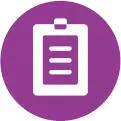 Clinical observations refer to the recording of the patient respiratory rate, pulse rate, blood pressure, oxygen saturations, temperature, blood glucose and level of consciousness. These are colloquially known as ‘vital signs’.
Clinical observations refer to the recording of the patient respiratory rate, pulse rate, blood pressure, oxygen saturations, temperature, blood glucose and level of consciousness. These are colloquially known as ‘vital signs’.
Интервал:
Закладка:
Похожие книги на «The Nursing Associate's Handbook of Clinical Skills»
Представляем Вашему вниманию похожие книги на «The Nursing Associate's Handbook of Clinical Skills» списком для выбора. Мы отобрали схожую по названию и смыслу литературу в надежде предоставить читателям больше вариантов отыскать новые, интересные, ещё непрочитанные произведения.
Обсуждение, отзывы о книге «The Nursing Associate's Handbook of Clinical Skills» и просто собственные мнения читателей. Оставьте ваши комментарии, напишите, что Вы думаете о произведении, его смысле или главных героях. Укажите что конкретно понравилось, а что нет, и почему Вы так считаете.
